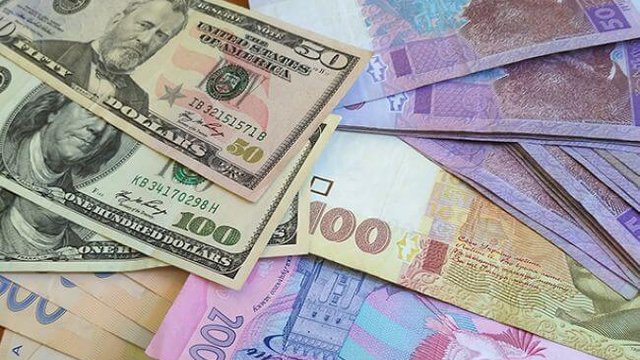13:18
21.10.2025

Last week, the National Bank of Ukraine (NBU) reduced its U.S. dollar sales on the interbank market by $131.6 million (17.9%) to $602.7 million. Meanwhile, the hryvnia’s depreciation slowed to 12.8 kopecks from 37.4 kopecks the previous week.
According to the NBU, the average daily negative balance of buying and selling foreign exchange currency by legal entities increased from $36.6 million to $74.2 million in the first four days of last week, totaling $297 million.
Meanwhile, the cash market saw a decrease in foreign exchange currency purchases by the population: from Saturday to Thursday, the negative balance was $21.3 million, compared to $29.6 million the previous week. The purchase of non-cash foreign exchange currency exceeded its sale throughout this period.
The official hryvnia exchange rate to the U.S. dollar started last week at UAH 41.6027/$1 and weakened to UAH 41.7607/$1 over three days, but ended the week at that level.
Over the past week, the U.S. dollar exchange rate on the cash market varied along the trajectory of UAH 41.7565/$1, and the hryvnia’s overall weakening amounted to about 25 kopecks: purchase — approximately UAH 41.70/1$, and sale — approximately UAH 41.80/$1.
Last week, Bloomberg reported that the International Monetary Fund was pressuring Ukraine to increase the rate of hryvnia devaluation. However, there is no information yet on the impact of this factor, except that the hryvnia fell slightly on the first day of trading this week, reaching UAH 41.7624/$.
“The Ukrainian foreign exchange market remains under the influence of the National Bank of Ukraine’s strategy of controlled flexibility. Since the beginning of October, the hryvnia has gradually weakened against the U.S. dollar. The exchange rate on the cash market is changing at a similar pace,” according to experts from KYT Group, a major participant in the cash foreign exchange market.
They added that there was a noticeable increase in demand on the interbank market in October, forcing the NBU to increase interventions. According to experts, this trend is seasonal because companies need more foreign exchange currency in the fall to make payments. Additionally, the hryvnia was influenced by the increased shelling of Ukraine’s energy and gas infrastructure, which led to an increase in gas and energy equipment imports.
KYT Group’s forecast for the exchange rate on the cash market is as follows: “Short-term (1–1.5 weeks): base range UAH 41.4–41.9/$1 with a probable tendency to the upper limit of the forecast.”
In the medium term (two to three months), its experts predict that the exchange rate will be in the range of UAH 41.30–42.00/1$. They believe that if the Fed cuts rates in October and the risk of a trade war between the U.S. and China weakens, the U.S. dollar’s fundamental movement on the international market may strengthen, which would also affect the exchange rate in Ukraine. However, continued large-scale shelling of infrastructure, deterioration of the energy situation, and high import volume expectations in Ukraine may contribute to faster dollar strengthening on the Ukrainian foreign exchange market.
“In the long term (6+ months), the scenario of gradual hryvnia devaluation persists. Assuming regular receipt of international aid, the benchmark is UAH 43.20–44.40/$1 by mid-2026, considering the current situation in Ukraine,” according to the KYT Group.


